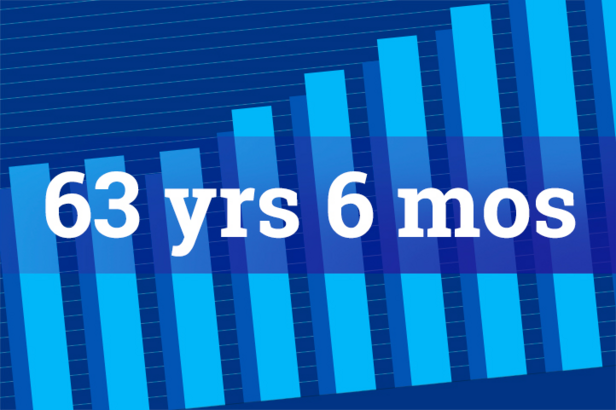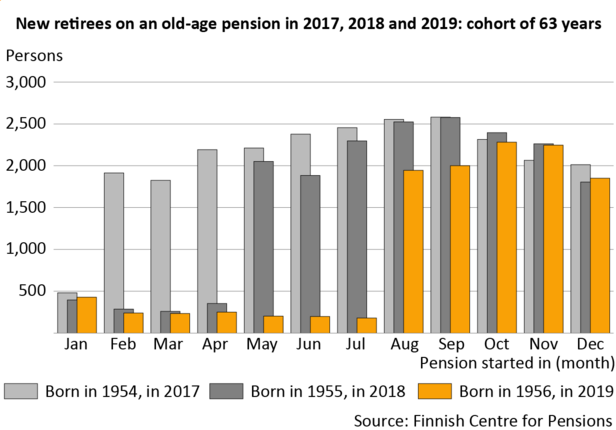Pension reform extends working lives

The majority of older workers defer retirement and continue working in pace with the rising retirement age. Last year, around 45,000 Finnish citizens retired on an old-age pension.
The eligibility age for the old-age pension rises by three months per age cohort. In 2018, it was 63 years and 3 months. In 2019, it rose to 63 years and 6 months, when the first of those born in 1956 reached the retirement age of their age cohort.
Recent statistics of the Finnish Centre for Pensions shows that both increases of the retirement age have deferred the peak effective retirement age by three months compared to the previous year.
“Since the majority of the older workers continued working up to their new retirement age, te pension reform in 2017 seems to extend the final part of working life. Many workers stop working and retire on an old-age pension as soon as they reach their own retirement age. Now this happens six months later than it did two years ago,” explains development manager Jari Kannisto (Finnish Centre for Pensions).

Fewer retired on an old-age pension than before the 2017 pension reform
In connection with the pension reform in 2017, a decision was made to raise the earliest eligibility age for the old-age pension. It now depends on the person’s year of birth and rises by three months each year. This clearly affects not only the time of retirement on an old-age pension but also the number of new retirees.
Before the pension reform, there were a total of 75,000 new retirees each year. Of them, 56,000 retired on an old-age pension. Last year, around 45,000 Finnish citizens retired on an old-age pension.
“In 2019, the number of new retirees on an old-age pension was more than 10,000 less than a couple of years ago. As a result of the raising of the retirement age, the number of persons reaching their earliest eligibility age for the old-age pension was lower,” Kannisto says.
Raising the retirement age has not increased the unemployment rate among the older citizens
In the last few years, more than 10,000 persons have transferred from an unemployment allowance to the old-age pension. The shares of men and women have remained equally large.
“Raising the earliest eligibility age for the old-age pension has not increased the unemployment rate of the older population. A favourable economic situation before the corona has surely promoted a favourable development,” Kannisto states.
Number of new retirees on a disability pension risen
Retirement on a disability pension has increased somewhat among the over-61-year-olds.
Before the 2017 pension reform, around 2,000 men and women aged over 61 years retired on a disability pension each year in Finland. In 2018, they numbered 2,600 and in 2019 already more than 3,000.
“It seems that for some of the 60-year-olds, the finish line is slightly too far away. They retire on a disability pension before reaching their old-age retirement age. It was to be expected that the number of disability pensioners would rise as a result of the changes in retirement ages”, Kannisto explains.
Table of retirement ages – the earliest eligibility age for an old-age pension depends on year of birth and rises each year
| Year of birth | Earliest eligibility age for old-age pension |
| 1954 and earlier | 63 years |
| 1955 | 63 years and 3 months |
| 1956 | 63 years and 6 months |
| 1957 | 63 years and 9 months |
| 1958 | 64 years |
| 1959 | 64 years and 3 months |
| 1960 | 64 years and 6 months |
| 1961 | 64 years and 9 months |
| 1962-1964 | 65 years |
| 1965- | Linked to life expectancy. The retirement age will rise by a maximum of two months per year as of 2030 |
or personal retirement age.
